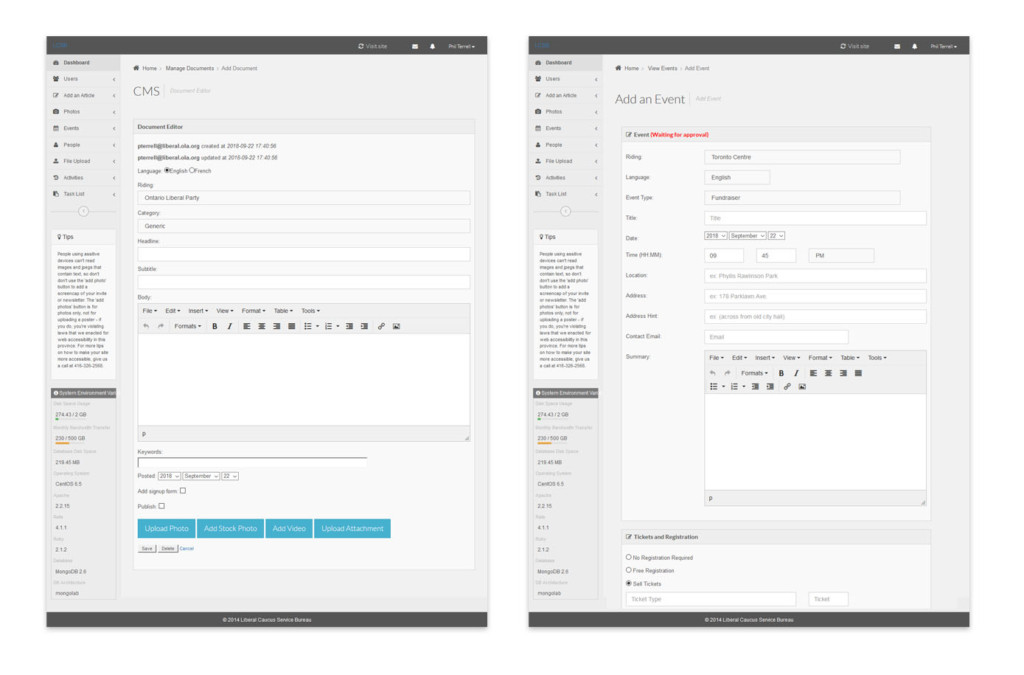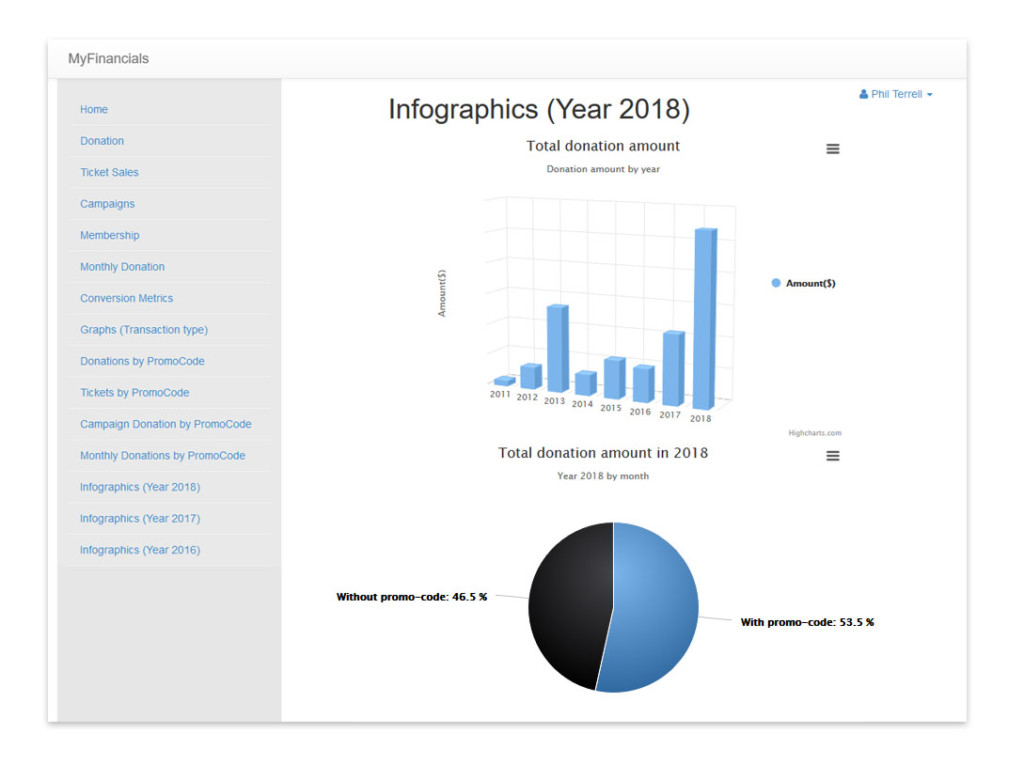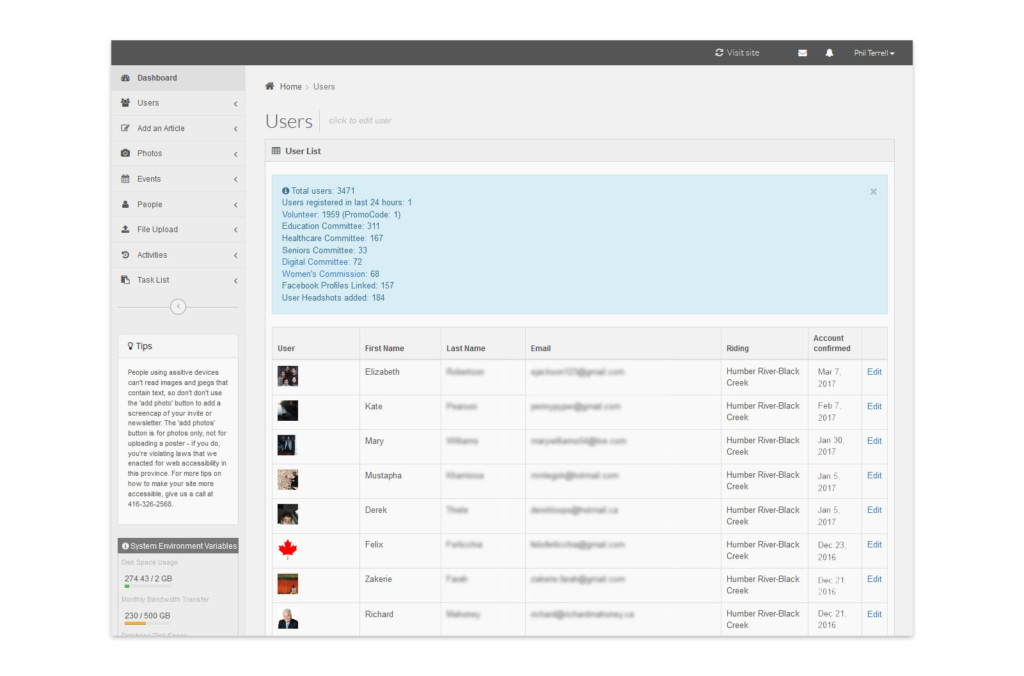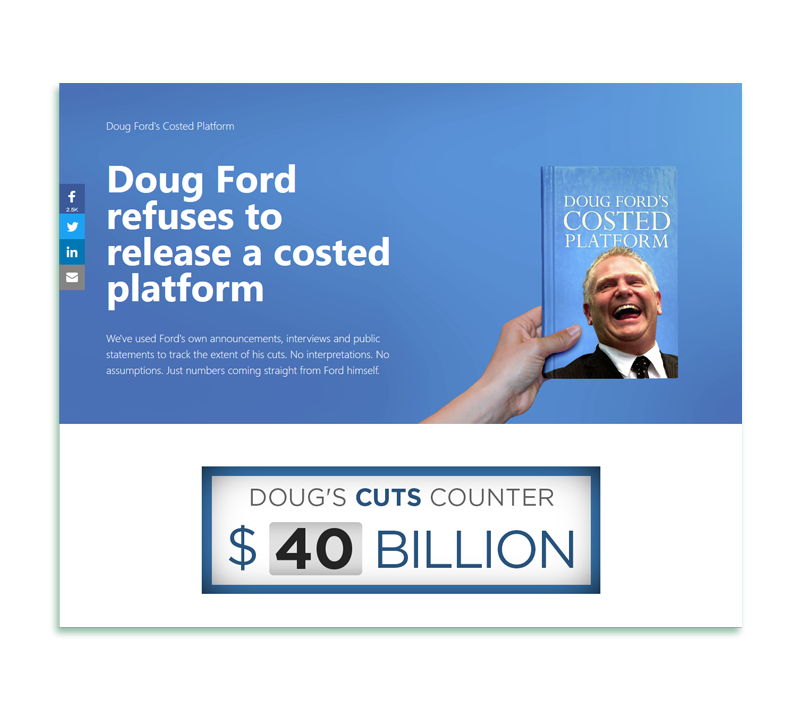Ontario Liberal Party
The Main party website was the hub for all online activities; volunteers, action committees, donations, ticket purchases and memberships to name a few. The specification had evolved over years of stakeholder consultations, both formal and informal, with the Ontario Liberal Party Fundraisers, Executive Council, Premier’s Office, Caucus and Riding Associations. We would encourage account creation and facilitate greater ease of use for return visitors, but unlike typical sites, there was no will to require users to register prior to making a donation as is typical in more conventional eCommerce settings. This presented some complex branching that had to be modeled, tested and secured.
Building a Simple Interface for Content Management
To say that the average politico is anxious about editing a website would be an understatement. It’s perfectly reasonable for users to ask for greater control and more customization, but with increasing control comes an increasingly complex user interface. With campaign teams forming and re-forming from week to week, formal training and scheduled webinars weren’t possible, so it was important to build a simple content management system that could be explained over the phone in a one-on-one session that typically lasted about 25 minutes. After building literally hundreds of campaign websites and supporting thousands of users, I was confident I knew precisely what was necessary and what was not. There was a bit of hand-holding to get someone to log in, but by the end of a 20 minute tutorial, there was always an audible sigh of relief. By the end they could manage their own candidate website, their own PLA website, sell tickets, deploy events to the main party site and analyze memberships and donations.
Tracking Codes, Analytics and Integration
Google tells you what users do on your site, but it can’t offer a lot of insight into why users do what they do on your site. Accept that Google probably cannot allow you to peer into your customer’s psyche (task-based user testing is the tool for that job). Once you crawl out from under the avalanche of meaningless data, you can make Google a lot more accessible to a lot more of your colleagues. I customized reports and widgets augmenting the website to track clicks and scrolls via JavaScript. I set up tracking graphs and helpful widgets to focus in on the more useful metrics, like how paid advertising and social media compared to unprompted and unsolicited donations.
Setting up Google Analytics, or any analytics for that matter, requires consultation. It’s relatively easy to turn on a spigot of data, but a developer like me has to be more mediator, consultant, confidant and therapist to work out who needs what and how. And Data is especially useless without benchmarks and historical reference and to preserve those metrics through multiple iterations of a website requires a coordinated plan.
I zeroed in on what data points were important to our user-base and built them lists, tables and tracking graphs that fit their workflow. We called this MyFinancials.
OAuth Authentication, Account Management and Roles and Permissions
Given the unique constraints placed on political donations and restrictions within the OLP constitution, our account creation model needed to capture, and later act upon, data points like date of birth. To facilitate easier account creation I decided to implement OAuth 2.0 Authentication for Facebook users, allowing them to skip email confirmation and skip to stage two of the account creation. This added a bit of complexity, but it allowed consenting users to skip some data entry and automatically upload their headshot to the system.
It was important to make account creation easy, robust and secure for a number of reasons, primary among those reasons was that it was these identities that controlled people’s access to internal resources, like our secure communications extranet, discussion boards and financial analytics. Through the custom backend that we’d constructed we could assign roles and permissions each user.
Saturday Night Comms Emergency? No Problem.
It’s not unusual to find yourself tossing together a critical response site on a few hours notice on a Saturday night. Idea was floated at about 7:00 PM and I think I got this live by 1:00 AM. Does a microsite like this serve a purpose? Perhaps not as part of your broader long-term online strategy, but as an anchor for a communications rollout it can be enough to nudge you into the news cycle.







Find me on the Interwebz